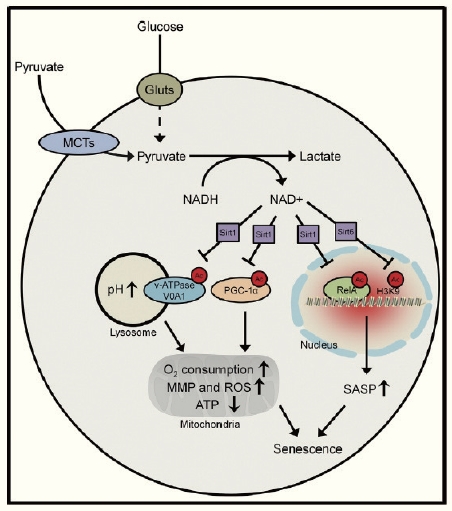
AMOREPACIFIC, in collaboration with Seoul National University Hospital, has discovered the effect of pyruvate, an intracellular metabolite, on skin cell senescence for the first time in the industry.
This study (Pyruvate Protects against Cellular Senescence through the Control of Mitochondrial and Lysosomal Function in Dermal Fibroblasts), was published in the June 2018 issue of the Journal of Investigative Dermatology, an internationally recognized journal in the field of dermatology. It was selected as the cover paper in the December 2018 issue (Vol.138), the latest issue, in recognition of its role in inhibiting skin aging.
Over time, or from external stimuli, a person's skin suffers from aging. During this process, wrinkles increase, and skin elasticity and barrier function are reduced.
Therefore, the development of effective substances that inhibit aging is a particularly important task in skin science research.
AMOREPACIFIC has focused on the metabolites present in human blood. In particular, one goal is to prove that pyruvate, which is an intracellular metabolite, enters the cells, induces the production of Nicotinamide adenine dinucleotideNAD+, a potent antioxidant, and significantly inhibits skin cell senescence.
Dr. Gil In-seop, senior researcher at AMOREPACIFIC institute of technology, and researcher Kim Jung-yeon, under Professor Song Young-wook at Seoul National University Endocrinology Hospital, found that aging cells require more pyruvate. In addition, it has been found that pyruvate significantly inhibits skin cell senescence by promoting the degradation of abnormal mitochondria, reducing reactive oxygen species, and reducing the expression of the senescence-associated secretory phenotype SASP. This study was further validated by verifying the anti-aging efficacy against artificial skin as well as skin cells.
Park Won-suk, the director of the Innovation Research Center at AMOREPACIFIC, said, "The results of the research, which were reaffirmed by the selection as the cover paper, are based on the bio-based research that Amorepacific has been steadily developing for the first time in the global cosmetics industry. It is very meaningful that this new anti-aging effect of intracellular metabolites is the first of its kind in the worldwide cosmetics industry."

